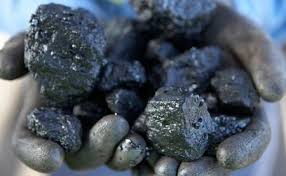 The collapse of a single coal storage silo at a major power station in South Africa last Saturday has revealed the hollowness of the global coal industry’s sales pitch that coal plants are “very reliable” – and crippled the credibility of the government-owned utility Eskom.
The collapse of a single coal storage silo at a major power station in South Africa last Saturday has revealed the hollowness of the global coal industry’s sales pitch that coal plants are “very reliable” – and crippled the credibility of the government-owned utility Eskom.
Early last Saturday afternoon, maintenance workers at Eskom’s 4110-megawatt (MW) Majuba power station noticed coal leaking from a crack in the central coal silo. The silo is pivotal to the operation of the plant as it is connected to the three-pronged conveyor system which feeds coal into the plant’s six generating units.
Amateur video footage reveals the side of the silo splitting open like a can. Shortly afterwards it collapsed, pulling down the linked arms of the coal conveyor system. From running at 3600 MW the plant’s generation capacity was cut back to 1200 MW, and then just 600 MW. With the generating system running on a wafer thin reserve margin, widespread blackouts were inevitable.
If the collapse of the silo and the prospect of load-shedding weren’t bad enough, Eskom opted to kick an own goal by stating in its initial media release that the silo had “cracked” and had only been damaged.
To make matters worse an Eskom security guard arrested a journalist photographing the collapsed silo under reviled apartheid-era laws restricting access to “national key points.” The guard wanted the journalist to hand the camera over and ensure the photos of the collapsed silo were deleted.
What caused the silo collapse is not yet clear. Eskom claims the silo was inspected last year and given the all-clear. The trade union, Solidarity, said that since January Eskom staff had been monitoring the silo for vibration and any damage caused by it. According to the union, checks in June – and just three weeks ago – indicated that the vibrations were getting worse.
In the days since the accident Eskom has cobbled together a ‘recovery programme’, urging customers to cut consumption, running their hydro storage down and organising a fleet of trucks to load coal onto mobile conveyors to feed Majuba’s stricken units.
While the initial fears of a week or more of sustained blackouts have receded for the moment, the silo-collapse saga illustrates the vulnerability of coal plants to low-probability but high-impact events.
While Rio Tinto’s chief executive of energy and President of the World Coal Association Harry Kenyon-Slaney proclaimed (paywall) earlier this week that coal plants were “very reliable”, he was glossing over not only Eskom’s current headache but those of other countries where a heavy reliance on coal plants has become a liability.
Serbia’s power generation system has still not recovered from a devastating flood in May which crippled the lignite mine supplying Serbia’s biggest coal-fired power station. Nor could Kenyon-Slaney credibly claim that Sri Lanka’s shiny new US$1.35 billion Norochcholai Power Station is “very reliable” when its constant breakdowns have driven even former supporters to argue it should be scrapped.
While Eskom can fix the coal conveyor system for the Majuba power station, it is hard to see how it can repair its credibility. Eskom’s attempt to spin a pile of rubble as a “cracked” silo raises the question whether they can be trusted on any issue.
While no-one was hurt in the silo collapse, the same can’t be said of the pollution that comes from Eskom’s fleet of 14 existing coal-fired power stations. A Greenpeace report released earlier in the year estimates that – if Eskom complied with the Minimum Emission Standards – up to 20,000 premature deaths could be avoided.
While current legislation requires Eskom to meet existing coal-power station plant standards by 1 April 2015 and stricter new plant standards by 1 April 2020, Eskom has been lobbying to be granted “rolling” postponements. While South Africa’s Minister for Environmental Affairs, Edna Molewa, recently signalled she wanted Eskom to comply with the law, few believe that Eskom’s lobbying will end.
In many ways South Africa epitomises the coal-centric vision of future electricity supply that Kenyon-Slaney extols: a country with a heavy reliance on coal power, which is struggling to complete more controversial plants.
Choices about electricity supply also inevitably involve decisions about public health and the ability of citizens to democratically influence decisions, two topics notably missing from Kenyon-Slaney’s column.
On these counts Eskom fails to meet basic standards. It is a utility which has had a silo collapse a year after it gave it a clean bill of health, tried to mislead the public about the accident, arrested a journalist for doing his job and is trying to avoid meeting legally-binding pollution clean-up obligations which would save thousands of lives.
While Kenyon-Slaney recites the coal industry’s hype of coal-fired power stations being ‘clean’ and ‘reliable’, in South Africa Eskom generates dirty power which is far from reliable.
Bob Burton is a Contributing Editor of CoalSwarm and a Director of the Sunrise Project, a non-profit group promoting a shift away from fossil fuels. With Guy Pearse and David McKnight he co-authored Big Coal: Australia’s Dirtiest Habit. His Twitter feed is here.







